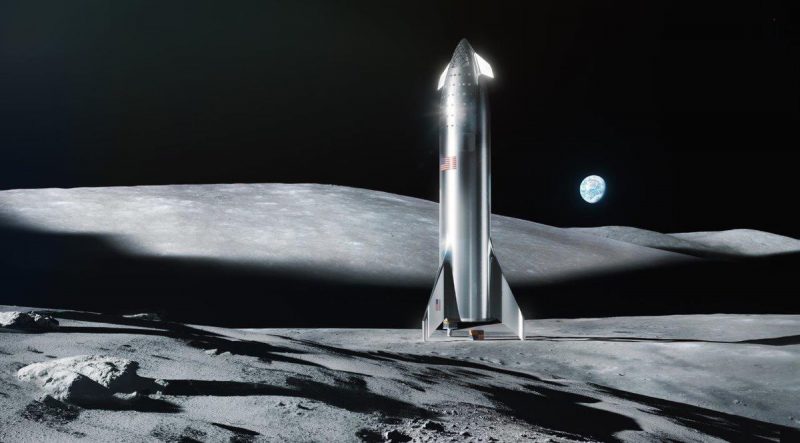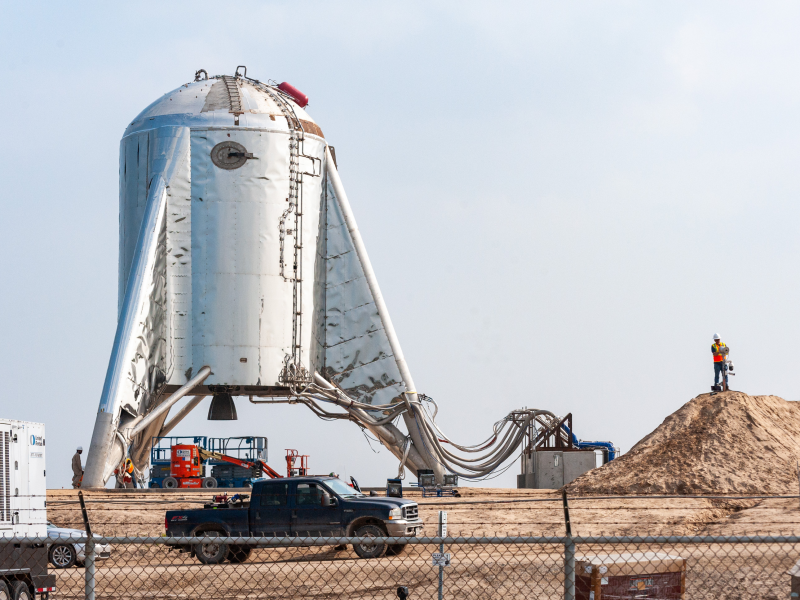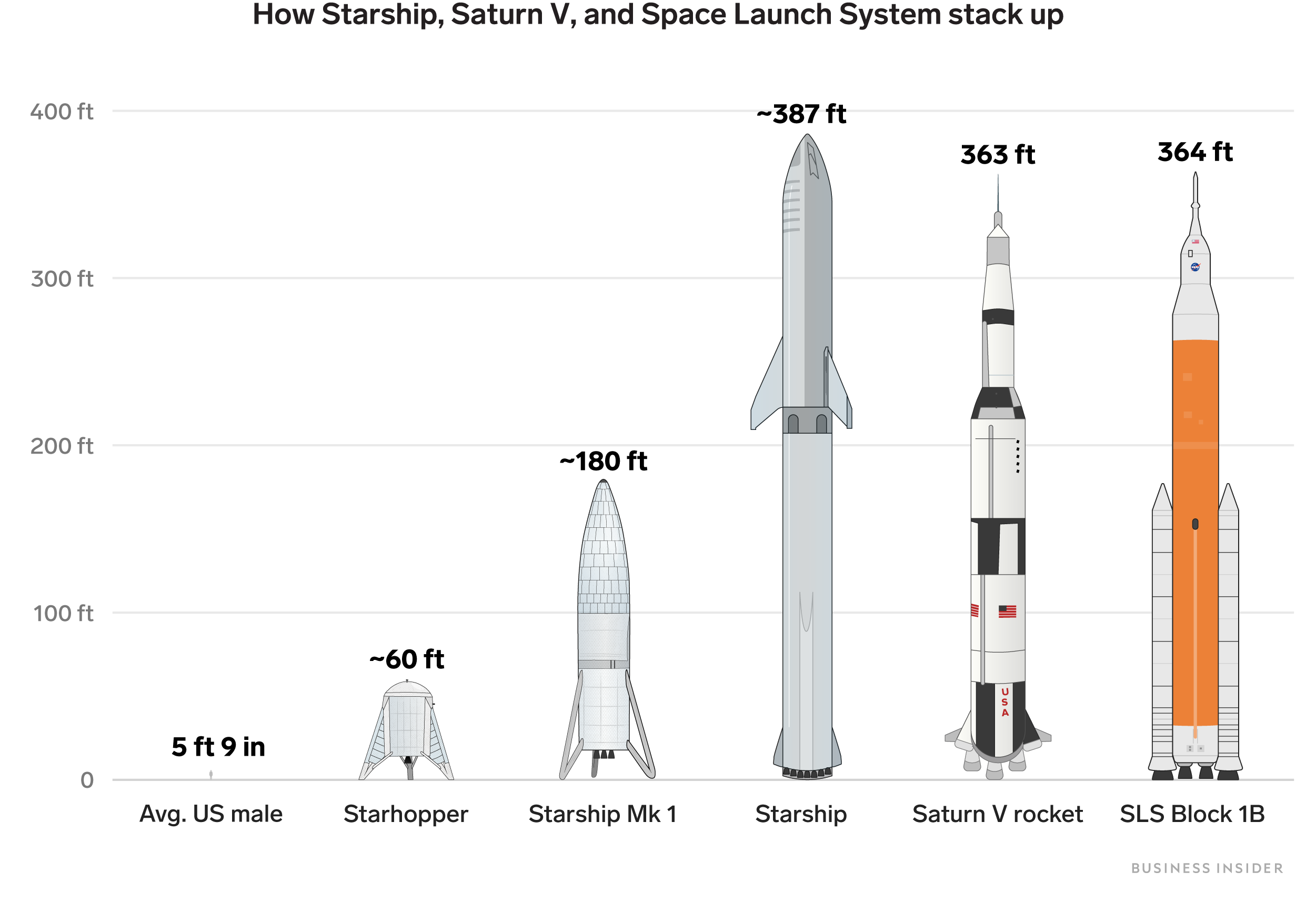- NASA landed the first humans on the moon 50 years ago, on July 20, 1969. A towering Saturn V rocket helped send the Apollo 11 astronauts there.
- SpaceX, the rocket company founded by Elon Musk, is developing Starship: a new launch system to land on the moon and Mars.
- SpaceX is working on prototypes of the vehicle, including one called Starhopper, in south Texas.
- According to Musk, a completed Starship could be 387 feet tall and 30 feet in diameter. That’s significantly larger than a Saturn V rocket.
- Visit Business Insider’s homepage for more stories.
The energy required to launch three people out to the moon, land two of them on its surface, and bring everyone back to Earth is a monstrous amount. To get that job done during its Apollo program, NASA created the Saturn V rocket.
Each Saturn V rocket stood about 363 feet (111 meters) tall and 33 feet (10 meters) wide. The scale is hard to fathom, but it’s akin to filling up a small skyscraper with enough liquid fuel and oxidizer to level a small town.
The giant machine powered the world’s first crewed moon-landing mission – the Apollo 11 astronauts stepped onto the moon on July 20, 1969. Five more moon landings followed, though no one has returned in decades.

Now, 50 years later, private interests have set their sights on sending people back to the moon. Blue Origin, founded by the billionaire Jeff Bezos, is pressing for a lunar return, as is SpaceX, the aerospace company founded by Elon Musk.
Musk has presented several versions of a giant new launch system called Starship in the past few years. He says it could take about 100 people and 150 tons of cargo to Mars at a time, starting in the mid-2020s.
NASA is also planning to return humans to the lunar surface in 2024 with its own rocket system, called Space Launch System (SLS). But that program is years behind schedule and over budget by hundreds of millions of dollars, so Musk is pitching Starship as a capable alternative.
"This is gonna sound pretty crazy, but ... with an uncrewed vehicle, I believe we could land on the moon in two years," Musk told Time Editor at Large Jeffrey Kluger on July 12. "So then maybe within a year or two of that we could be sending crew. I would say four years at the outside."

Musk is due to show off his engineers' newest version of the Starship design later this summer. His most recent presentation about the launch system was given in September, and it showed a vehicle standing about 387 feet (118 meters) tall and 33 feet (10 meters) wide.
To make the booster-and-rocket-ship system a reality, SpaceX is developing and launching prototypes in South Texas. The illustration at the top of this story compares two of those early test beds (at left) with Starship, NASA's Saturn V, and the space agency's planned SLS.
Starhopper, which is not designed to go to space, is due for its second demonstration launch next week. Musk said the rocket will launch about 65 feet (20 meters) into the air, hover, and then land.

SpaceX engineers are also building what appears to be a 180-foot (55-meter) mockup of the Starship system's spaceship, called Starship Mark 1. Musk has said that prototype could reach orbit by the end of the year.
The current plan is to make Starship out of stainless steel, which Musk has said would make the launch system more durable, reusable, and inexpensive. The Starhopper prototype demonstrated that durability on Tuesday, when a fuel leak sparked a fireball that briefly engulfed the vehicle.
"Big advantage of being made of high strength stainless steel: not bothered by a little heat!" Musk tweeted on Wednesday.
If realized, a fully fueled Starship could weigh more than 9 million pounds (4 million kilograms) at the launch pad - about 30% heavier than a Saturn V.
This story has been updated.

